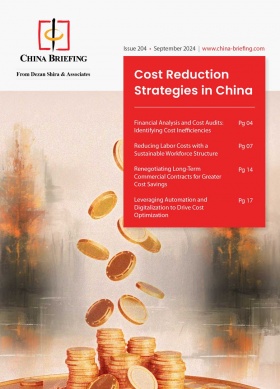China’s Workforce Dynamics and Regional Trends
- Despite a declining working-age population, China’s workforce saw a 6.9 million job increase in 2023, driven by policies re-integrating older workers.
- Aging is a major issue in northern provinces, while southern regions like Guangdong attract younger populations, affecting labor and consumption trends.
- China’s labor market is seeing a decline in high-skilled foreign talent, with a rise in low-skilled labor from neighboring countries.
China’s workforce dynamics are undergoing significant transformations, shaped by broader demographic shifts and structural changes in the labor market. According to the China Statistical Yearbook 2024, one of the most notable developments in 2023 is a short-term rebound in total employment numbers, marking the first increase in nine years.
Employment figures rose by 6.9 million, while the labor force expanded by 3.53 million. This growth offers a brief respite after nearly a decade of decline in employment since 2015.
Paradoxically, this rebound occurs amidst a continued decline in the working-age population (16–59 years), which shrank by 10.75 million compared to the previous year. These seemingly contradictory patterns highlight the complexities of China’s labor market, where factors such as an aging population, evolving policy adjustments, and shifts in labor market structures are reshaping workforce dynamics.
This article delves into these nuances, exploring key trends and regional disparities that define China’s demographic landscape. By examining the interplay between aging, migration, urbanization, and employment structures, we aim to shed light on the challenges and opportunities these shifts present for China’s economy and its future workforce.
Key trends in workforce dynamics
Employment growth amid declining workforce
In 2023, China’s labor market witnessed a surprising shift: the total employment figure grew by 6.9 million jobs, marking the first rebound in nine years. This growth came despite the continued decline in the working-age population (ages 16–59), which decreased by 10.75 million in the same year. The duality of these trends highlights the complexity of China’s labor dynamics.
A key factor contributing to this paradox is the improvement in labor participation rates. More people, particularly from underrepresented groups such as older workers, were re-integrated into the workforce. This was aided by policy changes, such as reversing rigid retirement practices and relaxing the age cap for certain jobs, especially for older migrant workers in rural areas. These adjustments allowed a broader segment of the population to contribute to the labor market, offsetting the challenges posed by a shrinking working-age population.
Aging China’s workforce and labor composition
China’s workforce is not just shrinking but also aging at an accelerating pace. The average age of workers, particularly in agriculture and among migrant laborers, continues to rise. In 2023, the average age of migrant workers reached 43.1 years, with local farmers averaging 46.6 years and those working outside their hometowns at 38.9 years. Workers aged 50 and above now account for over 30 percent of the migrant labor force, while those under 40 have dwindled to less than 45 percent.
This aging trend poses significant challenges to productivity and economic growth. An older labor force tends to be less flexible in adapting to new technologies and industries, which are critical for driving efficiency and innovation. Moreover, industries reliant on physical labor, such as manufacturing and construction, face heightened concerns about sustainability as the pool of younger, more physically capable workers diminishes.
The aging workforce also impacts labor costs. As older workers often have higher medical and retirement needs, the burden on employers and social welfare systems is likely to increase. This underscores the urgency for China to address its demographic challenges by investing in workforce retraining, leveraging automation, and fostering new employment sectors to maintain its economic competitiveness.
Regional disparities in aging rates
A closer examination reveals stark regional disparities in aging trends. The Northeast provinces, such as Liaoning, Jilin, and Heilongjiang, have some of the highest proportions of elderly populations in the country. In Liaoning, for instance, over 21 percent of the population is aged 65 or above, meaning one in five residents is a senior citizen.
This is in contrast to regions like Guangdong and other economically vibrant provinces where younger populations continue to dominate due to strong internal migration and economic opportunities.
Similarly, Shanghai, despite its high aging rate, continues to attract young talent from across the country, mitigating some of the challenges associated with an aging workforce.
Longevity further adds nuance to these disparities. For example, urban centers like Shanghai see higher life expectancies and more active senior populations compared to rural areas, where access to healthcare and lifestyle differences impact longevity.
Nationally, life expectancy has increased significantly over the past two decades, with women living up to 80.88 years and men up to 75.37 years as of 2020, reflecting advancements in healthcare and living standards.
Impact on rural laborers and migrant workers
The aging phenomenon is especially pronounced among rural laborers and migrant workers. Farmers and other rural workers, who constitute a significant portion of China’s workforce, are aging rapidly due to the outmigration of younger populations to urban areas. As a result, many villages are left with a disproportionate number of elderly residents engaged in physically demanding agricultural work.
Similarly, the aging migrant worker population, often in their 40s and 50s, faces unique vulnerabilities, including reduced employment opportunities in cities and a lack of social security coverage in their hometowns.
China’s workforce analysis
Rise in service-sector jobs compared to manufacturing and agriculture
The employment structure in China continues to shift toward the service sector. In major metropolitan areas like Beijing and Shanghai, the dominance of tertiary-sector jobs is striking: over 80 percent of Beijing’s workforce and 66.1 percent of Shanghai’s workforce were employed in the service sector in 2023.
This trend reflects the ongoing transition toward a more service-oriented economy, particularly in economically advanced regions.
Regional variations in employment sectors
Significant disparities in employment structures exist between regions. Provinces such as Zhejiang and Guangdong benefit from strong population inflows and maintain a higher labor force participation rate relative to their resident population. For instance, Zhejiang boasts a 59.17 percent employment-to-population ratio, reflecting robust labor market engagement and favorable demographic structures.
Conversely, Henan, despite being a major province by workforce size, exhibits a lower employment-to-population ratio of 49.19 percent. This discrepancy is partially explained by Henan’s historical role as a population outflow region and its relatively higher proportion of aging residents.
Moreover, while regions like Shanghai and Zhejiang attract younger, skilled labor due to urbanization and economic opportunities, provinces such as Henan face challenges in retaining and rejuvenating their labor force.
Population dynamics and consumption trends
Birthrate variations across China
China’s birthrate has been experiencing significant regional variations, shaped by local economic conditions, cultural influences, and government policies. Some areas exhibit notably higher birthrates, such as Tibet, Guizhou, and Ningxia, which have emerged as regions with robust population growth. In these areas, supportive local policies—including extended maternity leave, tax incentives for families, and direct subsidies for childbirth—have played a key role in boosting fertility rates. For instance, the Tibetan Autonomous Region, known for its strong cultural emphasis on family, has seen a higher-than-average birthrate.
On the other hand, economically developed regions like Guangdong face complex challenges. While Guangdong remains one of the most populous provinces, with the highest absolute birth figures, it is grappling with a lower fertility rate compared to its historical growth. This is largely due to the pressures of urban living, higher costs of education, and changing social values. Local governments in these areas are actively exploring innovative policies aimed at reversing the fertility decline, such as offering financial incentives for housing and child-rearing and implementing programs that make it easier for young parents to balance career and family.
The government’s push to address these regional disparities in birthrate involves recalibrating policies to encourage population growth in less developed regions while also adapting to the realities of an aging society in the more prosperous coastal areas.
Shifting consumption trends
The aging population and fluctuating birthrates directly impact consumer behaviors across China. In areas with a larger proportion of elderly citizens, such as Liaoning and Heilongjiang, consumption patterns have shifted towards healthcare products, retirement savings plans, and services tailored to older demographics. These regions have seen an uptick in demand for healthcare services, home care products, and senior-friendly technologies, such as smart health devices and transportation services.
In contrast, regions like Guangdong, which still experience population growth due to the migration of young workers, are witnessing a boost in consumption related to family-oriented goods and services, such as education, entertainment, and technology. The demand for housing in these provinces also remains strong, with an increased focus on creating affordable housing units that cater to younger, growing families.
As the overall population structure shifts towards an older demographic, the consumption landscape in China will need to adapt to cater to the needs of both the elderly and the younger, working-age population. Policymakers and businesses will have to adjust their strategies to ensure balanced and sustainable growth in all regions, fostering both short-term consumption demand and long-term economic stability.
China’s labor market for foreigners: 2025 outlook
Decline in high-skilled foreign talent
Besides internal shifts, China has experienced a marked decline in its foreign workforce, with numbers dropping from approximately 845,000 in 2020 to 711,000 by 2023. However, the reduction in expatriates from developed nations like Germany, France, and Italy is especially concerning, with declines of 25 percent, 20 percent, and 20 percent, respectively, in recent years. This trend predates the pandemic but was further exacerbated by strict COVID-19 measures, contributing to a shift in the expatriate demographic. Many high-skilled professionals and executives have relocated to alternative hubs such as Singapore, Vietnam, and Thailand, diminishing China’s attractiveness as a regional headquarters for multinational corporations.
The focus of many international companies has shifted toward a “China for China” strategy, prioritizing localized talent and decision-making structures. As a result, demand for expatriate executive searches has declined, with greater emphasis on recruiting domestic professionals.
Rising inflows of low-skilled labor
While the decline in high-skilled expatriates is pronounced, the inflow of low-skilled labor from countries such as Myanmar, Vietnam, Laos, and Cambodia has increased substantially.
This has led to a redistribution of the foreign labor force, with traditional business hubs like Shanghai and Beijing witnessing population declines, while provinces such as Yunnan recorded exponential growth in foreign workers. This shift may have longer-term implications for China’s economic dynamism and labor market balance.
Economic recovery and policy incentives
Despite challenges, there are signs of improvement in China’s labor market. Unemployment in urban areas fell to 5.2 percent in 2023, and youth unemployment, while still significant, dropped to 14.9 percent in December 2023 after peaking at 21.3 percent earlier in the year. The government’s measures to stabilize the economy—such as extending tax exemptions for foreign workers’ benefits until 2027 and introducing visa-free entry for citizens of key countries—are positive steps to attract international talent and ease business operations.
GDP growth rebounded to 5.2 percent in 2023, suggesting a gradual recovery. However, broader macroeconomic challenges, including an aging workforce, a declining population, and high labor costs, continue to weigh on the market. Moreover, China’s labor market challenges coincide with increasing competition from other Asian countries. Foreign direct investment (FDI) in ASEAN nations grew significantly between 2020 and 2022, with Vietnam, Thailand, Malaysia, and India emerging as preferred destinations for greenfield projects, particularly in manufacturing.
Outlook for 2025
All in all, China’s labor market faces a pivotal moment, balancing resilience with long-term structural challenges. Efforts to localize talent remain central, but recent policy shifts reflect an awareness of the need to attract and retain diverse skills. However, these measures alone may not fully counter the loss of high-skilled expatriates and the demographic pressures of an aging workforce.
As businesses increasingly adopt “China Plus One” strategies and regional hubs relocate to Southeast Asia, China’s labor market may shift toward a more localized and specialized workforce. The success of these adjustments will hinge on how effectively the country can align its labor policies with broader economic goals, including supply chain diversification and boosting domestic consumption. In 2024, the interplay of these factors will shape whether China can sustain its competitiveness in a rapidly evolving global landscape.
About Us
China Briefing is one of five regional Asia Briefing publications, supported by Dezan Shira & Associates. For a complimentary subscription to China Briefing’s content products, please click here.
Dezan Shira & Associates assists foreign investors into China and has done so since 1992 through offices in Beijing, Tianjin, Dalian, Qingdao, Shanghai, Hangzhou, Ningbo, Suzhou, Guangzhou, Haikou, Zhongshan, Shenzhen, and Hong Kong. We also have offices in Vietnam, Indonesia, Singapore, United States, Germany, Italy, India, and Dubai (UAE) and partner firms assisting foreign investors in The Philippines, Malaysia, Thailand, Bangladesh, and Australia. For assistance in China, please contact the firm at china@dezshira.com or visit our website at www.dezshira.com.
- Previous Article Navigating China’s Latest Export Tax Rebate Adjustments: What Are the Implications?
- Next Article 中国对外直接投资(ODI)追踪报告:2024 – 2025 年








